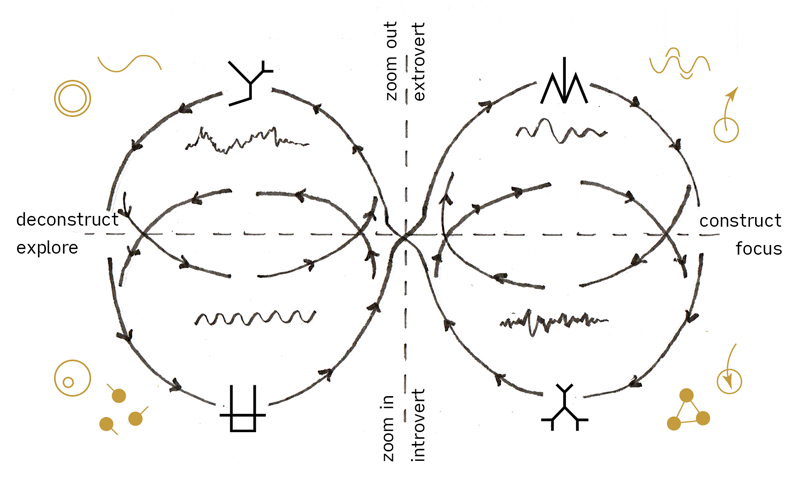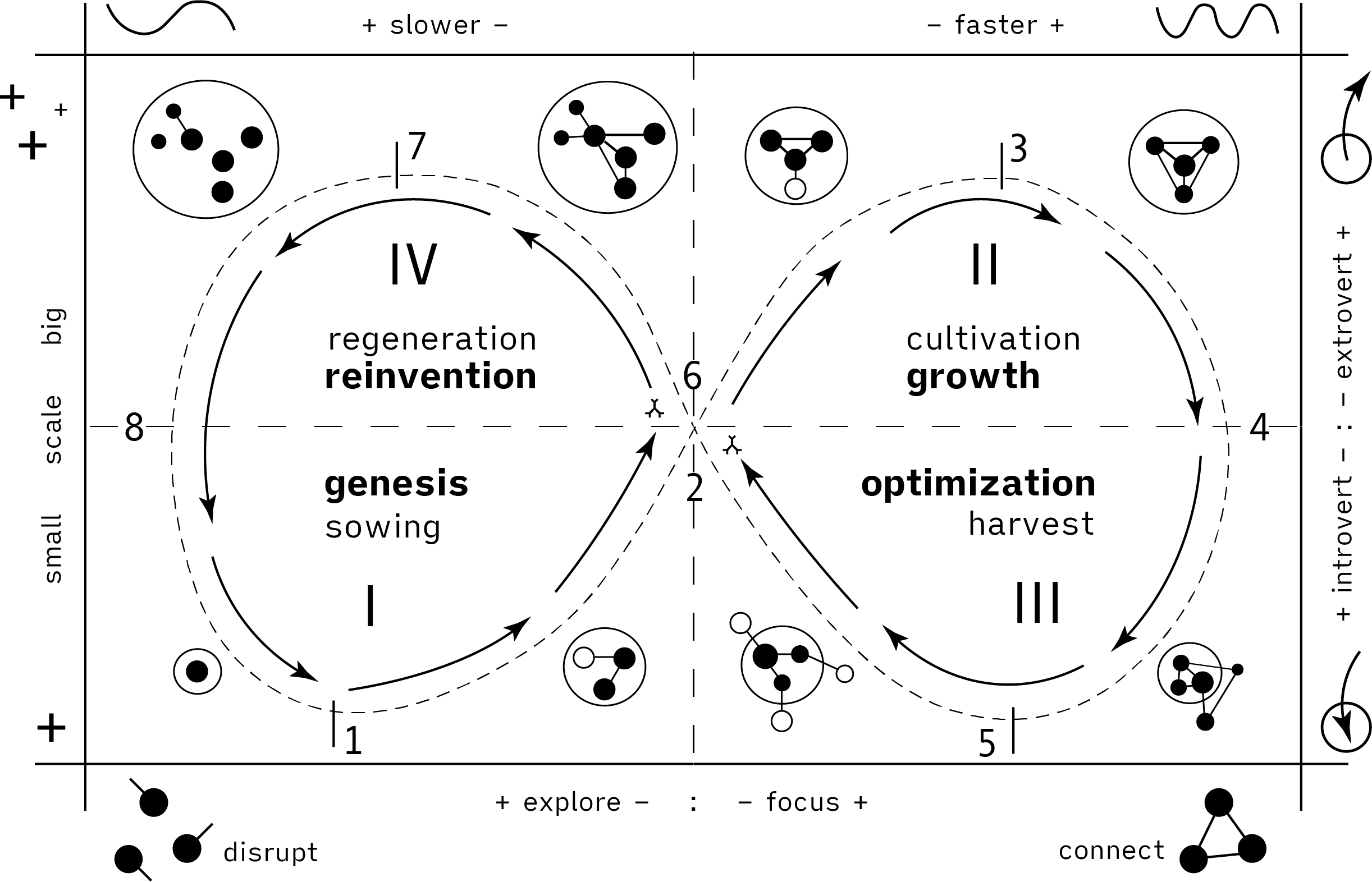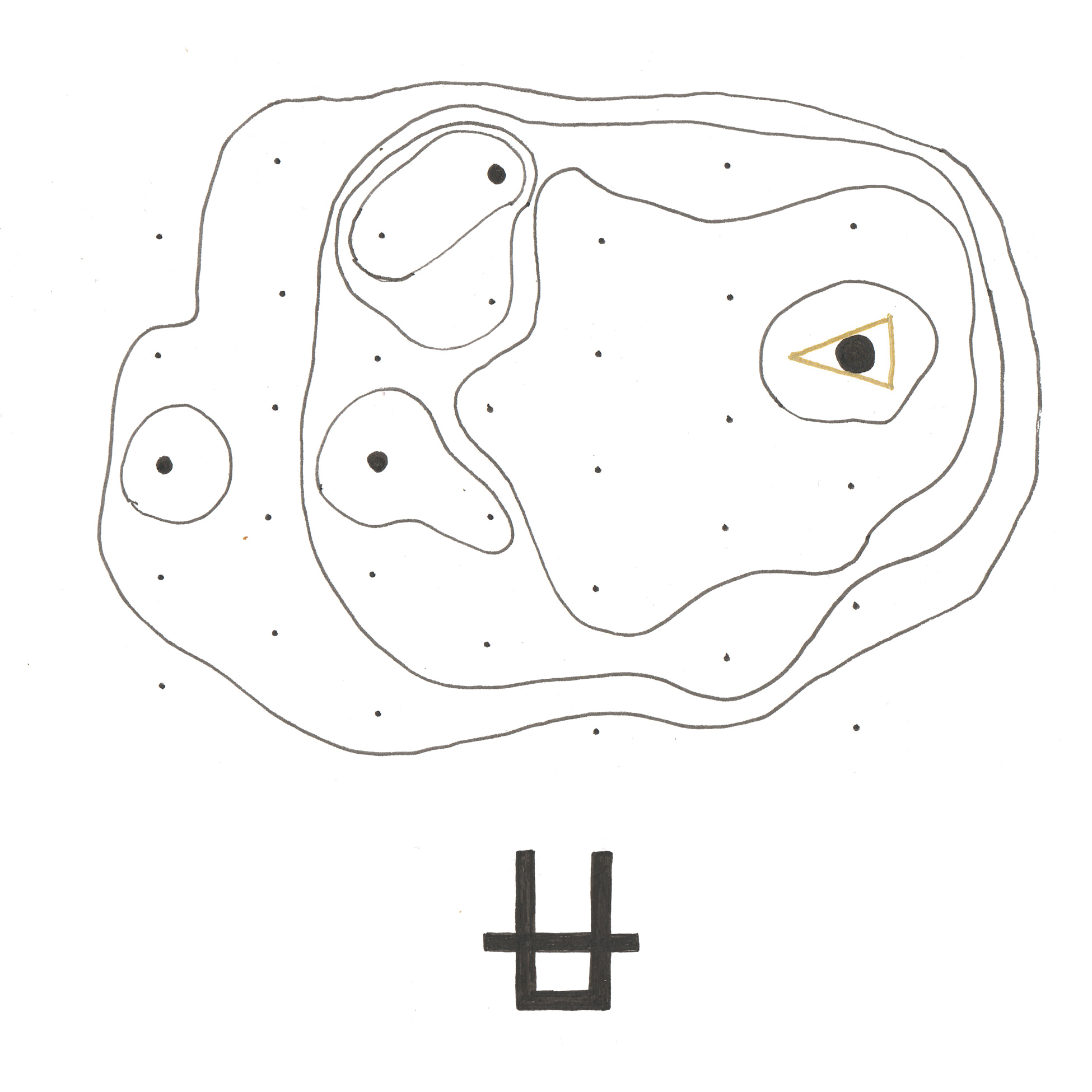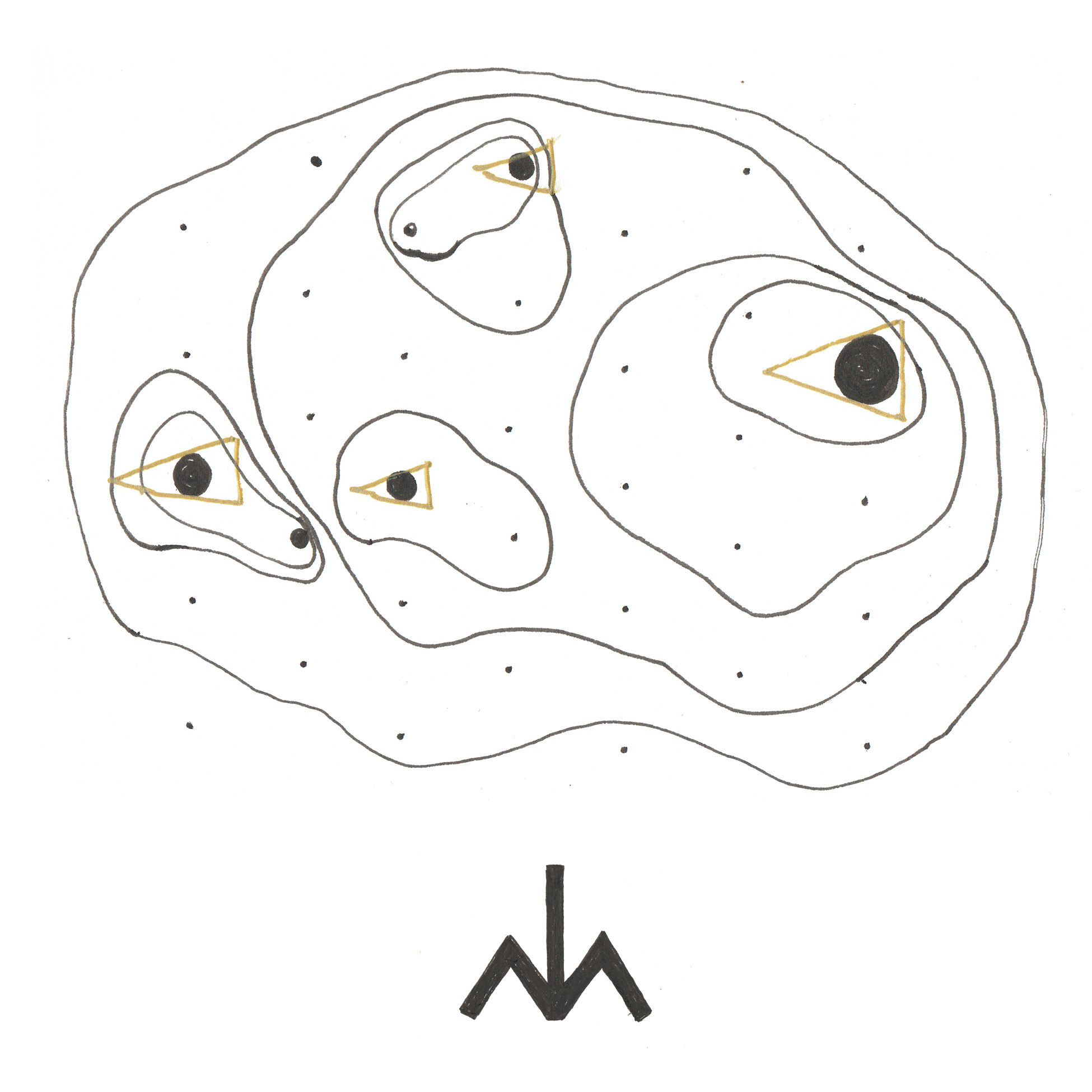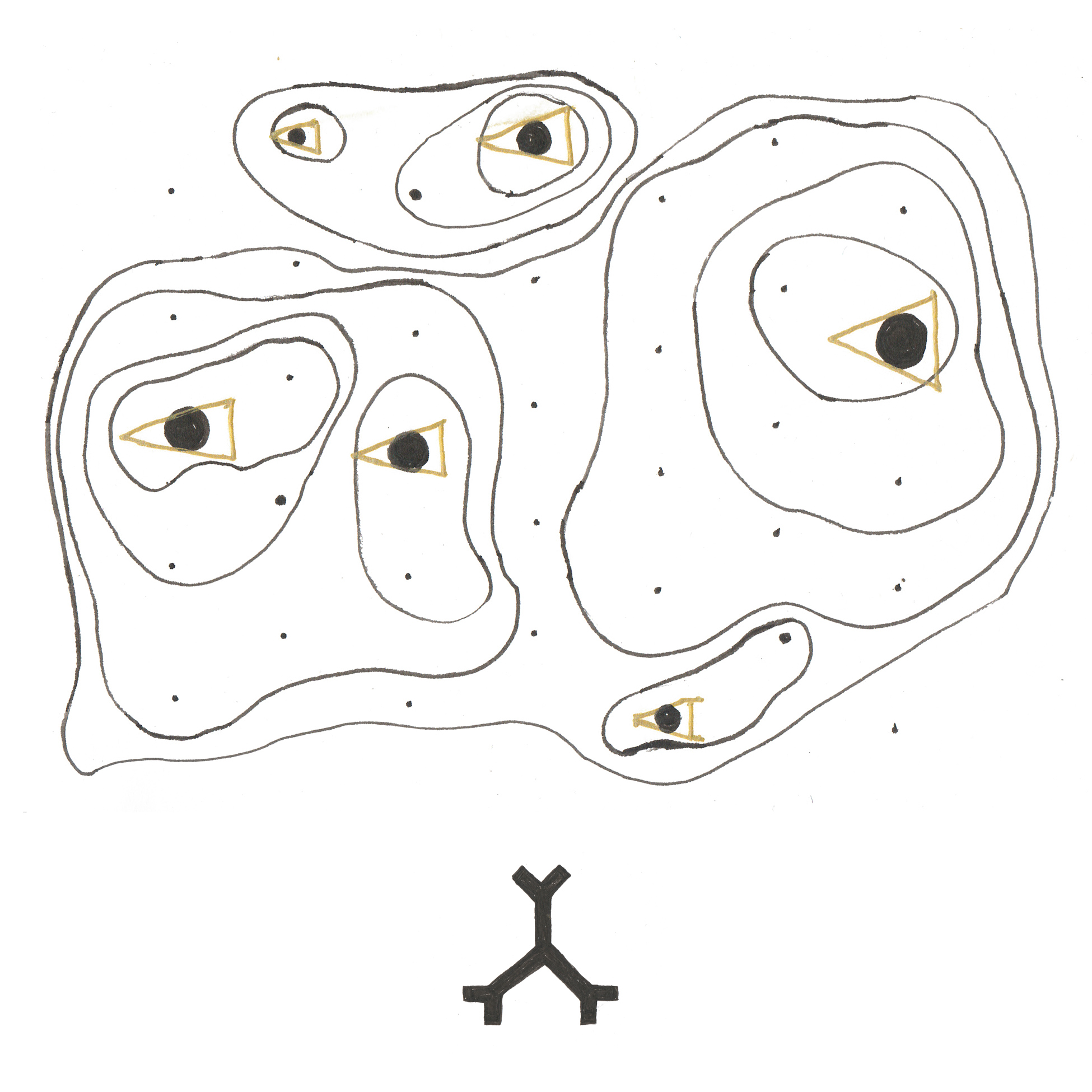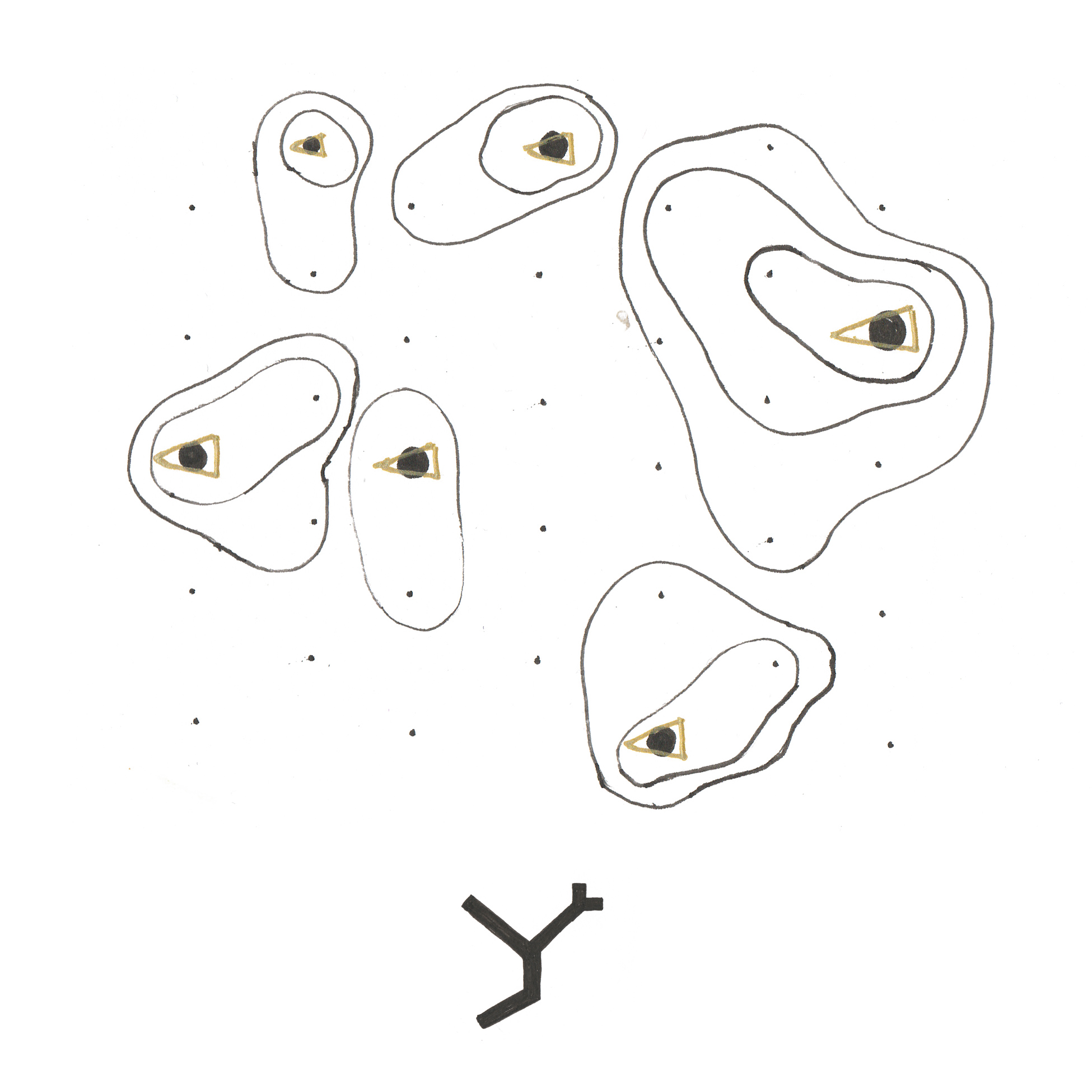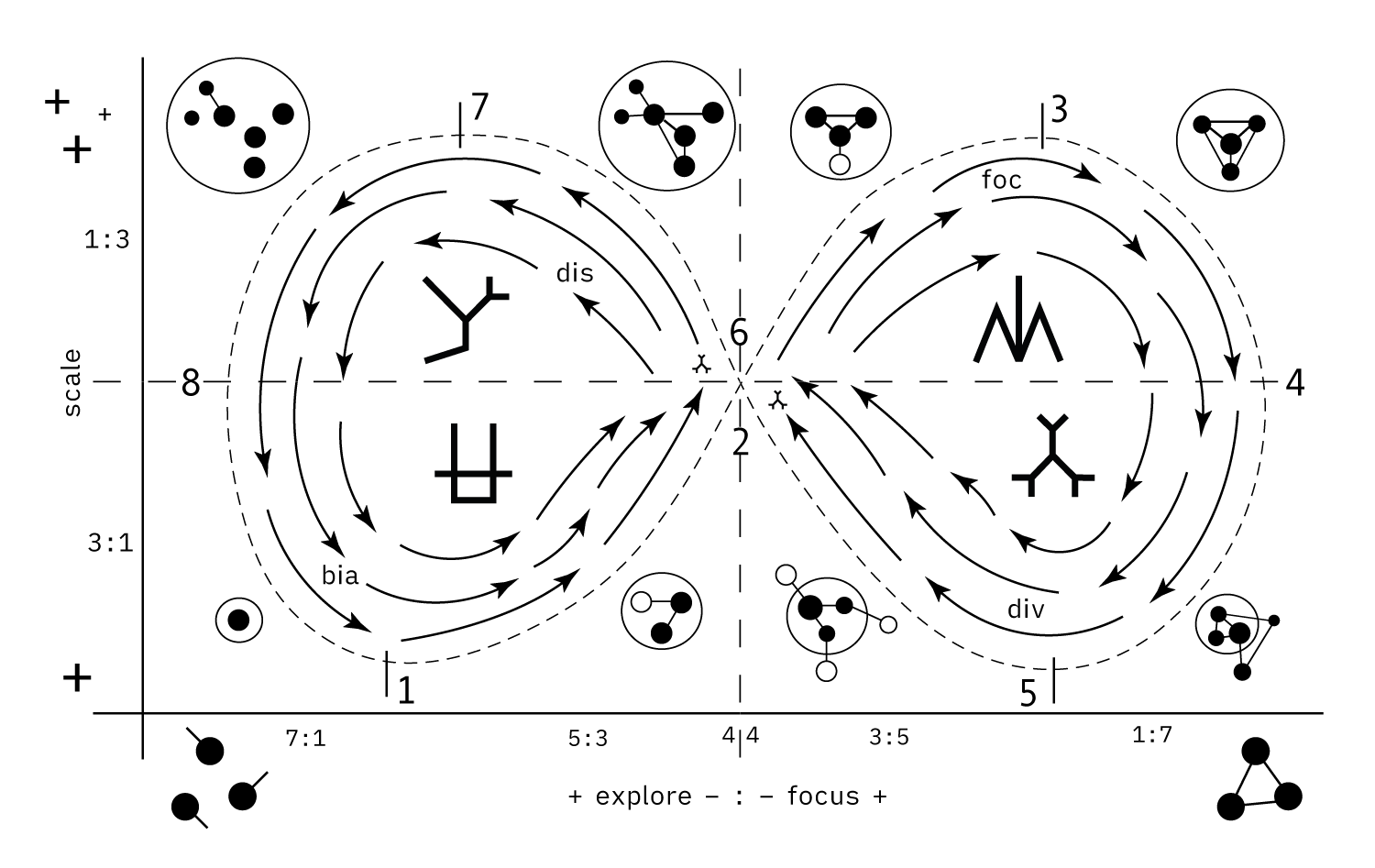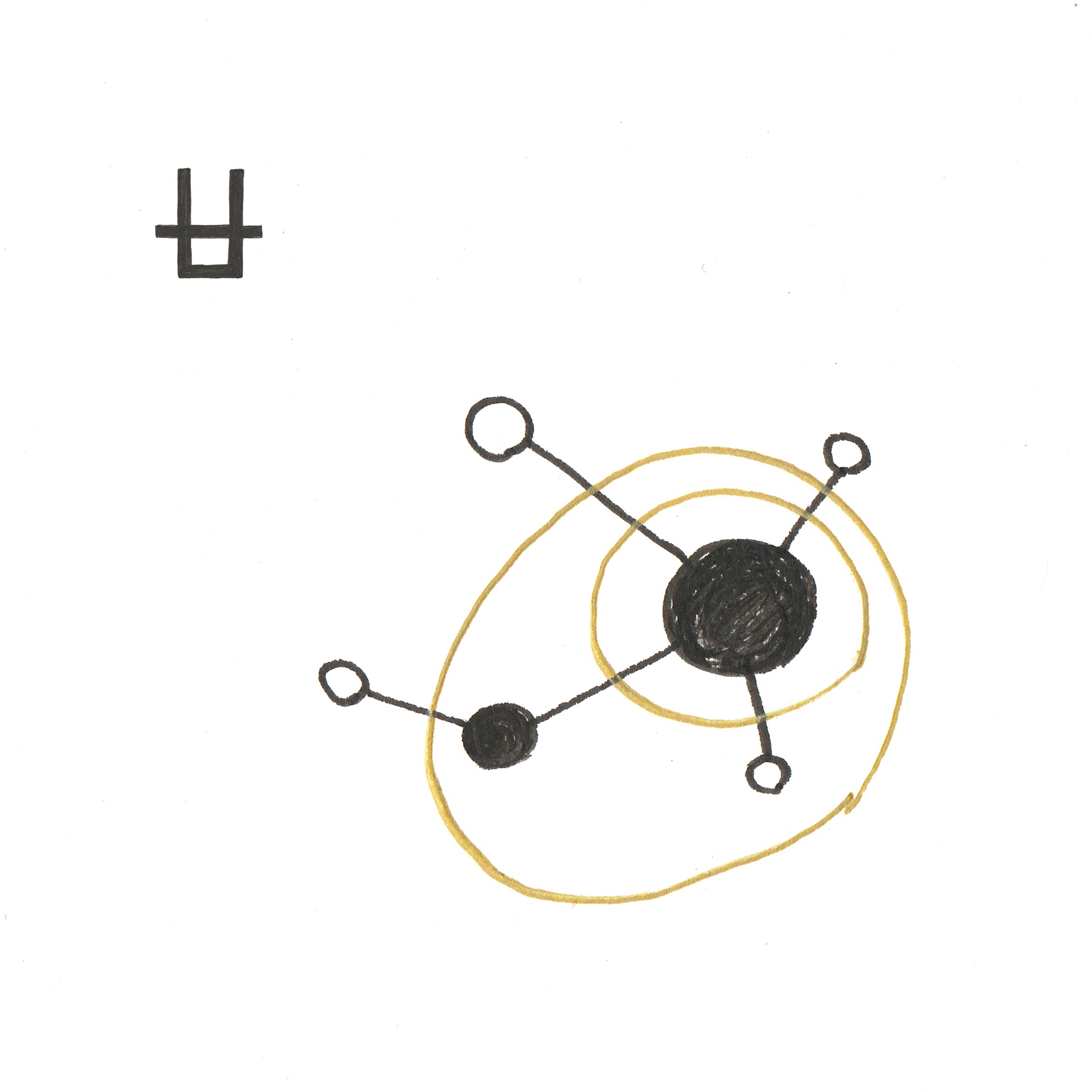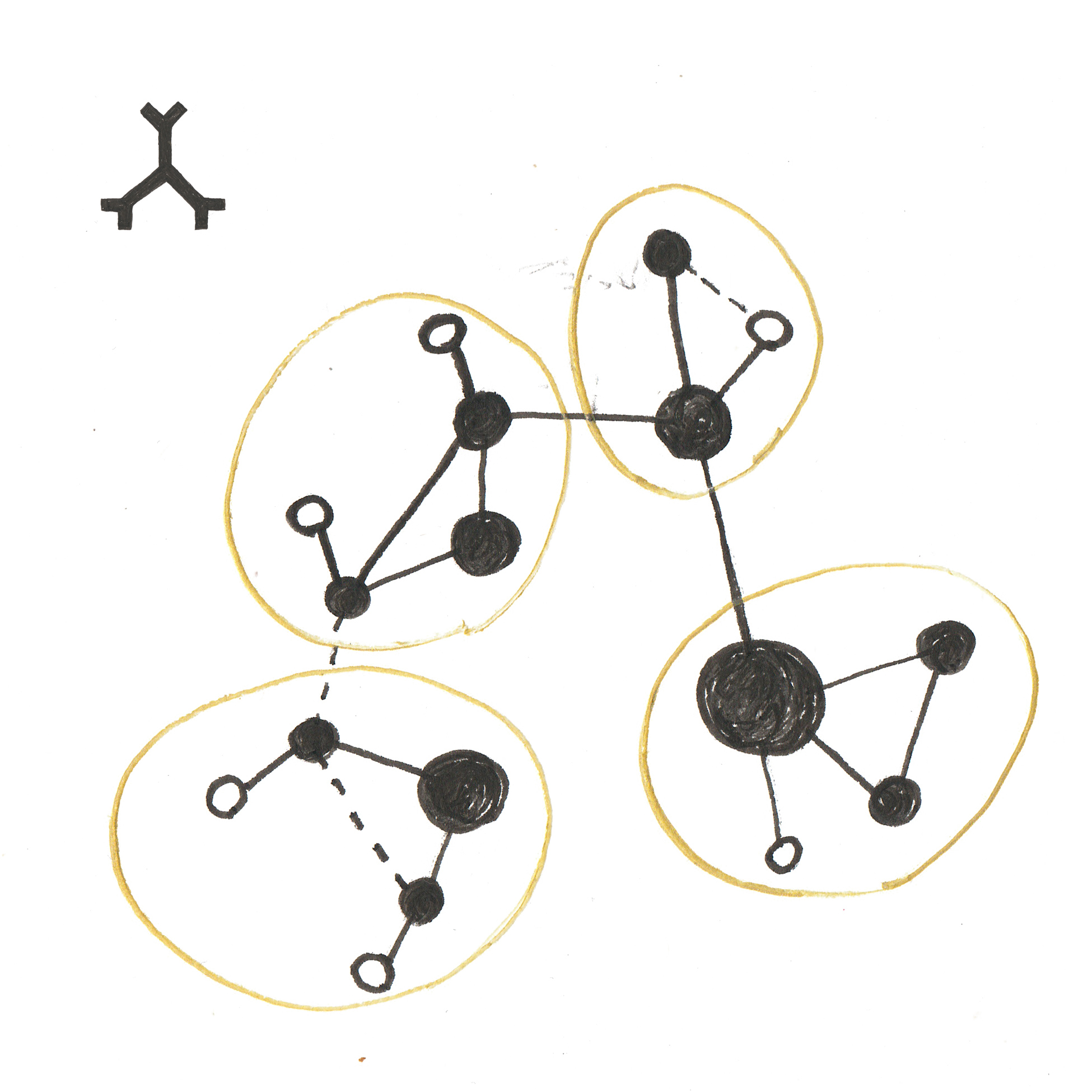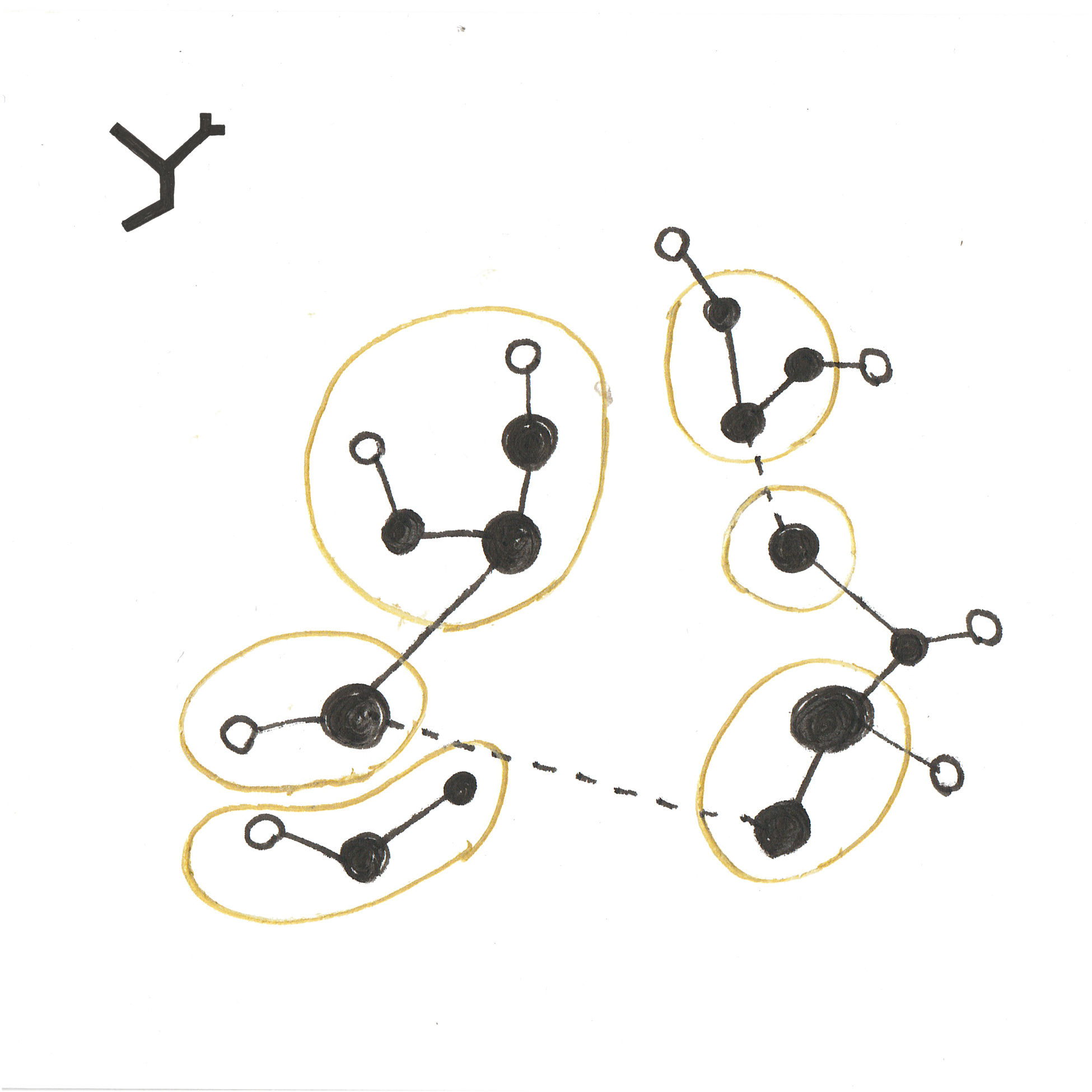Ecological Variability Framework
A schema and an algorithm for ecological variability aimed at promoting evolutionary adaptive flow in any environment.
The framework can be applied in a cognitive process in order to encourage mindful use of attention and openness to other perspectives and avoid obsessive-compulsive loops and totalitarian thinking. It can also be used in social environments or in any developmental projects where the objective is to help things evolve in an organic manner rather than focusing on the constant exponential growth.
This framework is implemented in InfraNodus thinking tool. The schema was also published online on the Nodus Labs website and released as a set of cards called Variflow Deck that can be used for strategic self-guidance. It is also applied to physical and collective movement in the frame of the EightOS project. Recently, as of 2023, it was also applied to the process of designing a residency and a functional architecture concept for a development project in Portugal.
Explaining the Framework
Ecological Variability Framework is designed to promote adaptive variability and inclusive exclusivity. It builds on the idea of Polysingularity taking it into the dynamic realm.
The basic approach is based on alternating between focus (connecting) and exploration (dispersing), zooming in (operating on a small scale), and zooming out (operating on a big scale). For instance, when applied to thinking, it can correlate with convergent and divergent thinking where a cognitive process is encouraged to go through the 4 stages of developing an idea from a very small scale > growing it, connecting ideas, scaling it up, then optimizing and removing the unnecessary ideas / connections, finally disrupting the structure in order to give space for the new idea to emerge.
Increased level of variability in thinking also makes a cognitive process more diverse and, thus, adaptable, robust, and resilient. On the individual scale, it may be used to modulate the limited attention resources. On the societal scale, it can be used as a counter-force to totalitarian ideologies, polarization, and filter bubbles.
Stages of Variability
The framework consists of four stages, which represent different stages of an ecological process. Each of these stages has certain benefits for a particular aspect of a system’s evolutionary development.
The first stage is the stage of growth. The general structure is dispersed however, observed at a small scale, a certain pattern emerges. It is biased and has one center that starts to expand rapidly. This process cannot go on forever as the resources are limited and unabridged growth would lead to extinction. So, at some point, we enter the second stage: saturation. It is characterized by a higher level of focus on the global scale, however, there is still a single center. A natural way to get through the saturation is to reorganize the systems and to start disrupting connections, operating at mid- and small-scale in order to rewire the system from the inside. This is the third stage: that of multi-scale reorganization usually associated with crisis. If reorganization is performed in a self-reflective, fractal way (which means similar variability across multiple scales), the level of adaptability for such system will be high and it will be able to get through the crisis and accumulate force for a new cycle of evolution or transformation. The fourth stage is the stage of disruption, which is an opportunity to reassemble itself into new multiplicities. It is then possible to zoom in and start the process again.
The stages of the process can be represented as images depicting dynamic multiple entities. We use this representation for body training and representing dynamics of social groups in the EightOS practice. For instance, each image can be used to train a certain type of resilience that best corresponds to the environment: e.g. the highly centralized structure can be used when it is necessary to apply strong force, while the dispersed visualization can be used for a period when it is necessary to be sensitive and open to external influences.
Advantages and Real-Life Applications
The advantage of this framework is that it can be represented in multiple terms: from conceptual and mathematical to visual and physical representation. This means that it can be integrated with a physical, cognitive, or technological system. One of the useful representations can be realized through a network structure (depicted in the images shown in this post). The network structure has four types, each corresponding to a particular state: biased, centralized, decentralized, and dispersed. We use this representation in InfraNodus software to guide a thought process, which is represented in InfraNodus through a network, through all these different stages, using AI to facilitate transitions between them.
Date
November 1, 2022
Year
2022
More Information
Category
Active, Discourse, Featured, Framework, In Progress, Medium, Methodology, Publication, Type, Urgency

